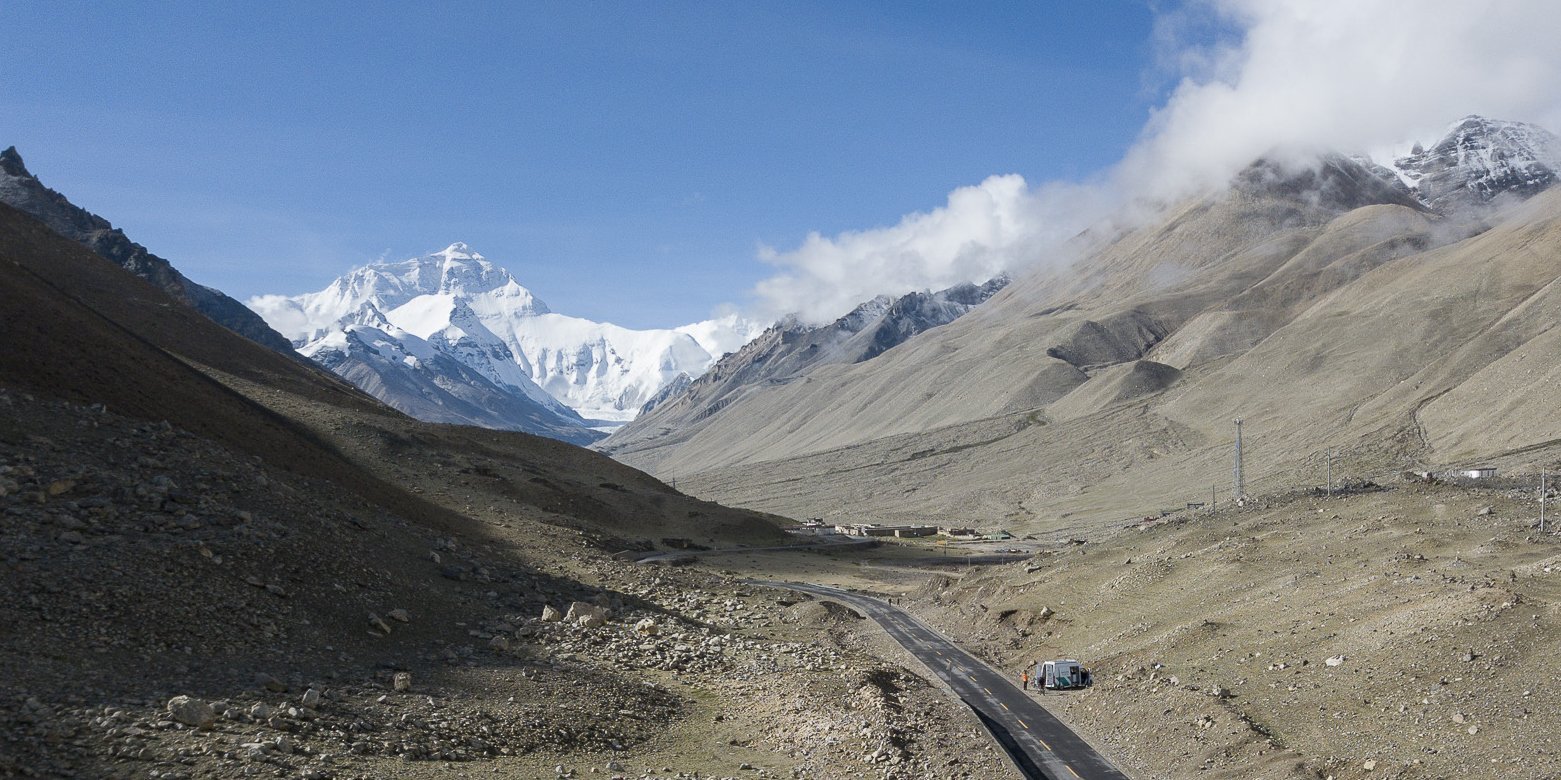October 04, 2018
I’d never been to Everest, and I’d never been to Tibet. For someone who spends considerable time in Tibetan regions this always seemed strange. The mountain has allured explorers and adventurers for years, but over the years its growing commercialisation has changed the character of an Everest adventure, and brought ever more inexperienced climbers to its summit, and larger quantities of rubbish to its slopes. Following the recent collapse of the Hillary Step, and the tragic earthquakes and avalanches, we should perhaps start heeding nature’s warnings.

The original 1920’s Everest expeditions approached via Tibet and the north. In those days permission to pass through Nepal was hard to obtain, but the monastic hierarchy of Tibet was open to foreigners travelling their lands to visit the Goddess of Mother Earth, even though the reason for climbing her was completely lost on them.
We travelled mostly by bicycle. I find a bicycle the best way to explore - walking takes too long, and I dislike sitting in a car for hours. In a car things pass by in an abstract way, much like watching the world through a TV screen. Although we felt free exploring by bike during our time in Tibet, we were foreigners, so it was necessary to travel as part of an organised group, which was expertly organised by Serk Cycles, one of the only cycle companies with access to Tibet.
Our trip could arguably be divided into two parts – pre and post Lhasa. During the pre-Lhasa phase we followed the Yarlung Tsangpo River in Eastern Tibet, mostly keeping to altitudes of less than 4,000 metres. It was hot during the day and dry, common for September, and certainly hotter and dryer than I’d expected. A t-shirt and shorts was all you needed. The region is experiencing considerable amounts of construction – power lines, rail, and road links, all of which are dragging the area into the 21st Century. Like many I have mixed feelings on this: As a visitor we all want to see the “real” Tibet, but the prospect of economic betterment seems as attractive to Tibetans as it is to people anywhere.
The further west we travelled, the wilder and more remote the landscapes become. After an overnight stop in Lhasa we began to climb, and from there to basecamp we rarely dropped below 4,000 metres. At times we crested passes of over 5,000. It was lung busting stuff, but the metronomic rhythm of cycling helps you manage your efforts, meaning climbing a short flight of stairs or pumping a flat tyre can feel more breathless than grinding up a mountain pass.
The landscape around Everest is high altitude desert with very little vegetation, and we consequently saw fewer yaks and nomadic settlements than I’d have expected - certainly far fewer than in the regions of Sichuan and Qinghai that I’m more familiar with. For a cyclist this meant less human interaction, but also no adverse encounters with roaming mastiffs. This was a huge relief as I'd forgotten to get an updated rabies shot.

During the final push to basecamp we first saw Everest at a distant of around 80km from a viewpoint on the Pang La pass, a point from which celebrated Everest pioneer George Mallory once stopped to observe the mountain nearly 100 years ago.

I’d seen an old photo of him sitting in the untouched wilderness taking in the view, much as I was doing now surrounded by a number of Japanese SUV’s and expensive digital cameras with long lenses. We even shared the spot with famed National Geographic photographer Michael Yamashita who happened to be passing through the region on route to western Tibet. Although we were hardly disconnected from the modern world, there was undeniably a remoteness to the viewpoint. I could imagine standing in the same spot once the vehicles had disappeared and feeling very alone.
The approach valley shields your view of the peak until some 15km to go, and then the mountain suddenly appears and is ever present until basecamp - magnificent and dominating, with her distinct pyramid-like peak bathed in the bright sunshine, and the Kangsheng face dropping dramatically to an unseen base.

Basecamp’s obvious marker is the famed Rombuk Monastery – a small and unpretentious seat of monastic learning that sits 3 km from what is termed "Basecamp". The actual basecamp for real climbers is few km further still, but accessible only to those with climbing permits. Fakers like us were not allowed to proceed that far. The whole area is dry and desolate, baked by strong sunlight and with little shade, but the ever-present peak of the mountain watching over us made it feel like a sacred place. There was even wifi – a gift from the gods further away in Beijing.








